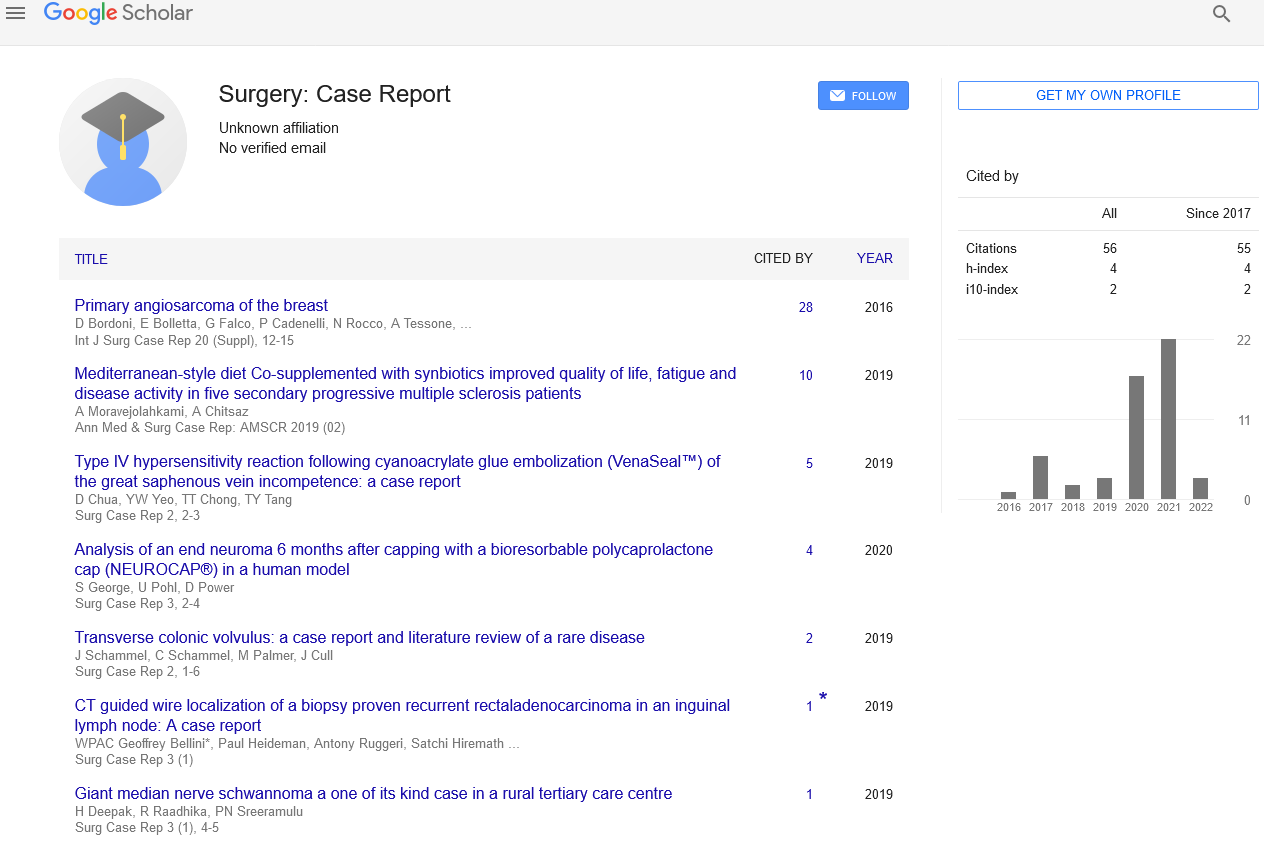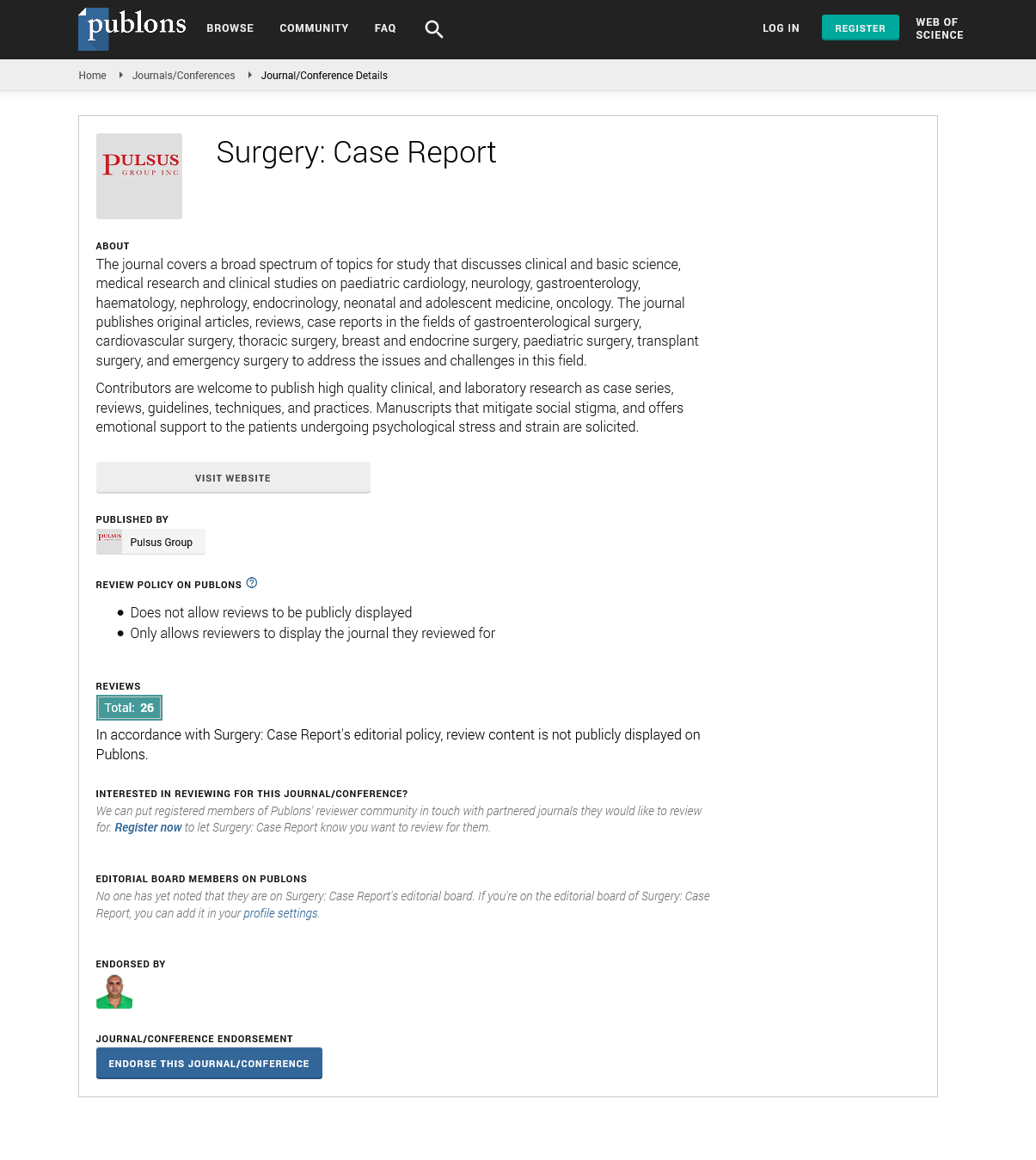Laparoscopic management of bilateral irreducible Amyand’s herniae in an infant
Received: 09-Mar-2019 Accepted Date: Apr 01, 2019; Published: 04-Apr-2019
Citation: Sandesh VP, Rahul KG, Beejal S, et al. Laparoscopic management of bilateral irreducible Amyand’s herniae in an infant. Surg Case Rep. 2019;3(1):6-7.
This open-access article is distributed under the terms of the Creative Commons Attribution Non-Commercial License (CC BY-NC) (http://creativecommons.org/licenses/by-nc/4.0/), which permits reuse, distribution and reproduction of the article, provided that the original work is properly cited and the reuse is restricted to noncommercial purposes. For commercial reuse, contact reprints@pulsus.com
Abstract
A 3 months old boy presented to us with bilateral irreducible inguinal herniae. After manual reduction, the herniae appeared clinically reduced, so he was posted for laparoscopic hernia repair the next day. Diagnostic laparoscopy showed a widely open left deep inguinal ring with edematous margins and no contents. On the right side, the proximal half of the appendix was seen entering the hernia sac and the distal half was adherent with the sac,preventing its repositioning to right iliac fossa. The appendix was carefully dissected from the sac using a 3-mm monopolar hook cautery followed by its reposition into the abdomen. Both deep inguinal rings were closed by intracorporeal knotting using polyethylene 3-0 suture on 16 mm cutting needle. Postoperative course was uneventful. The patient is asymptomatic at 6 months follow-up postoperatively In the present case, laparoscopy not only allowed simultaneous bilateral hernia repair but also allowed inspection of the bowel along with incidental diagnosis and management of Amyanda’s hernia.






